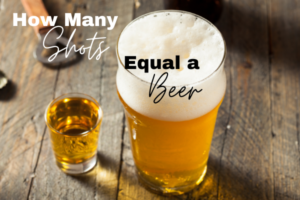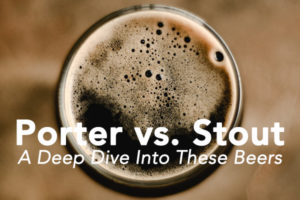Ever wonder how many beers in a keg, or How many beers can fit in a homebrew keg? That’s today’s million-dollar question!
It’s a common question every time I find myself at a gathering, wedding, or event and I take along a brew.
Or when buying beer people will ask, “How many kegs do I need?” and “How many beers are in a keg?”
Many people have pondered how many beers are in various types of kegs. There are many reasons why you should ask yourself this question. It includes concerns such as:
- From attempting to determine the number of kegs required;
- What kind of kegs you’ll need for your party, wedding, or other events; or
- You’re thinking about how many kegs you’ll need to order to please your group of beer-hungry pals.
- Trying to figure out how many beers you and your friends consumed.
Fortunately, it’s a question to which I always have a response.
Whatever the reason for your inquiry, we have an answer for you and some frequent uses for each keg style. Let’s talk about keg basics, from the standard keg to smaller kegs for homebrewing (and check out our article on how to brew beer at home.
Many individuals believe that draft beer tastes better than beer from a can or bottle. Then there’s the “Wow!” factor!
How cool would it be to serve your visitors a chilled pint of beer directly from the tap?
Not only will you save money, but tapped beer is also fresher and more flavorful than bottled beer.
Furthermore…
This quick overview and comparison will help you grasp keg sizes, dimensions, forms, capacities, and even keg nicknames.
We realize it’s a lot!
But this simple guide will help you through the difficult decision-making process. This will allow you to relax and enjoy your beer, kombucha, or whatever you’re drinking.
Also…
Depending on your kegerator, you may be able to select from several keg sizes.
Continue reading to get the best keg for your needs.
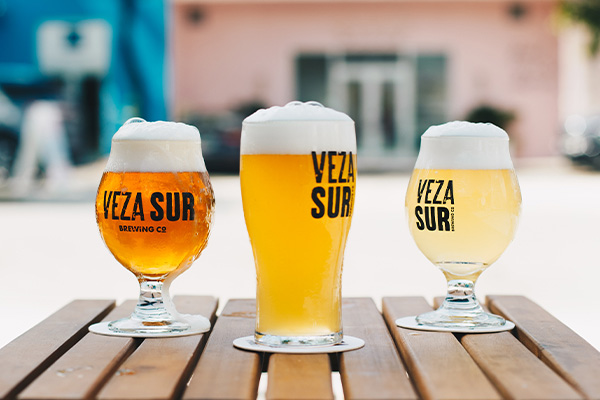
Cornelius Keg
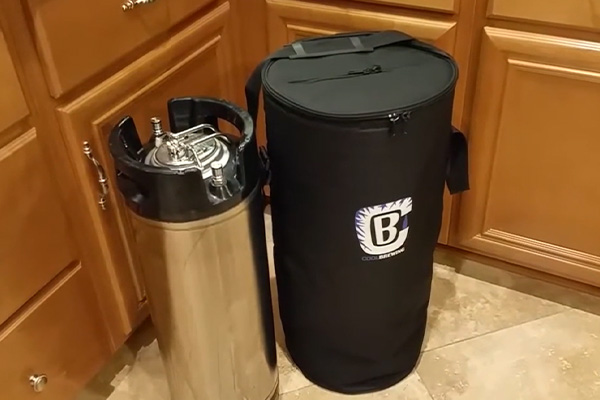
A Cornelius keg is a stainless steel cylinder originally used by the soft drink industry as a container. But they are now more used in home brewing or microbrewing.
It’s sometimes referred to as a Corny keg or a soda keg. They can hold and dispense sparkling or nitrogen-containing beverages. Cornelius keg was first manufactured by Cornelius, Inc.
Furthermore…
They have a capacity of 53 twelve-ounce pours. They’re one of the most adaptable systems available to the homebrewer.
Unlike commercial brewers, most homebrewers bottle their beer by hand. And for a large quantity, this can be time-consuming.
We’re sure you agree with that!
Check the list below for how many beers you can store in your Corny Keg.
- Pints (16 oz) of beer per keg: Approx. 40
- Cans / Bottles (12oz) per keg: Approx. 53
- Capacity: 5 gallons / 18 liters / 640 ounces
- Dimensions: 23″ x 9″
In addition to that…
Cornelius keg dispenses the beverage using pressured gas. This shape is great for storing soda, beer, and other carbonated beverages. Especially if it’s under pressure to maintain the gas dissolved in the liquid.
Sixth Barrel Keg
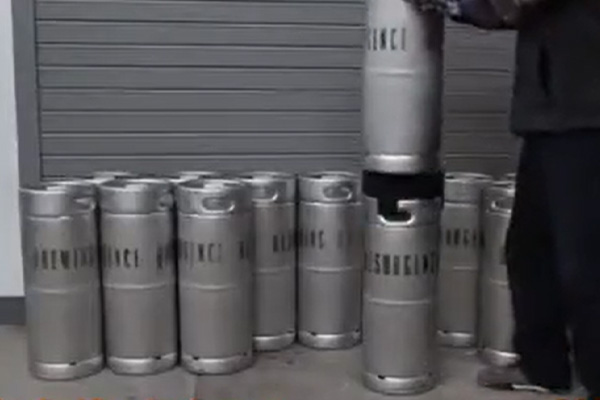
This keg is used in dual or triple-tap kegerators for personal use. Although larger, the sixth barrel keg is approximately the same size as the Corny Keg. This keg works exactly like its larger counterparts.
The exception is that it holds less beer than other types of kegs.
We won’t begrudge getting more to drink.
In contrast to a Cornelius keg, which has a pin lock or ball-lock or connection…
…this keg employs a standard keg valve design that demands a coupler for dispensing.
Moreover…
These kegs have proven popular with microbreweries. You can’t deny that fact!
It’s also okay with other venues that want to offer a diverse selection of beers in a small space.
They are well-known for their diminutive size. These are frequently utilized in two tap kegerators due to their lower footprint.
And lastly…
This size keg is particularly ideal for businesses and bars. Especially those with limited space but a need to offer a wide variety of beer to consumers.
You won’t see many of these around, but a sixth barrel keg carries 5.16 gallons of beer. That’s 56 of 12oz beers and 42 of 16oz beers.
Overall, check out the list below to discover how much the Sixtels pony keg can carry.
- Pints of beer per keg: Approx. 41
- Cans / Bottles (12oz) per keg: Approx. 55
- Capacity: 5.16 gallons / 20 liters / 661 ounces
- Dimensions: 23⅜” x 9¼”
Are You Interested In Brewing Your Own Beer At Home?
Click the button below to view our product reviews of the best all-in-one brewing systems.
Quarter Barrel Keg
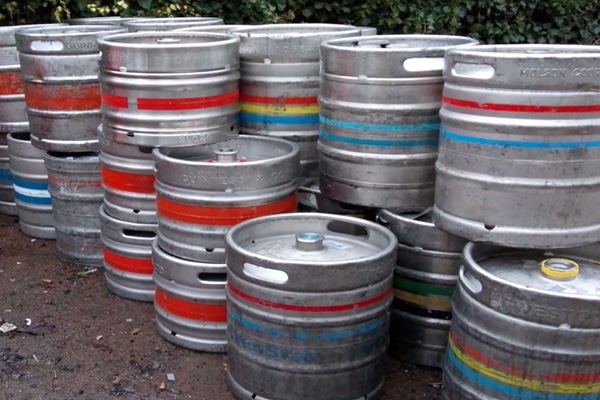
The Quarter Barrel Keg is great for small parties and tight quarters. This is also known as the keg family’s short and stubby sibling. It’s also referred to as Pony Keg or Stubby Quarter.
Stubby because there’s another keg with the same capacity as the quarter barrel…
…the slim or tall quarter keg, sometimes known as the slender quarter keg.
The slim quarter keg is more than 10″ taller and 5″ thinner than a regular quarter barrel keg.
So if you have an issue with the height of your keg, the Quarter barrel keg is the solution.
Moreover…
They have the same footprint as a half-barrel but are easier to move because they are about half the weight.
Here’s a kicker…
The moniker pony alludes to it being smaller in size. It can also compare to pony glass (quarter-pint) and pony bottle. It serves approximately 82 twelve-ounce cups.
A pony keg has the same shape as a full-sized keg but is easier to transport manually.
However…
It has several drawbacks, such as:
- Frequently requesting a deposit when purchasing,
- requiring a faucet to serve the contents, and
- making it impossible to determine how much beer is left.
Given this, a pony keg can be a valuable solution to supply beer for a medium-sized celebration.
Here’s a fun fact!
The word pony keg might refer to a beer-selling convenience store in some locales.
- Pints of beer per keg: Approx. 62
- Cans / Bottles (12oz) per keg: Approx. 82
- Capacity: 7.75 gallons / 30 liters / 992 ounces
- Dimensions: 13⅞” x 16⅛”
Don’t be fooled by its small size!
The keg’s short and stubby quarter design allows you to stack kegs for storage in a single kegerator.
Unfortunately…
It can only tap one at a time when stacked, but if you’re short on room, this little guy will come in handy.
Slim Quarter Keg
This keg is a more compact version of the Quarter Barrel Keg. The Slim Quarter Keg has the same capacity as a quarter barrel.
But, Sixth Barrel Keg wins from its narrow design. The Slim Quarter barrel is the same height as the Sixth barrel keg but wider. This extra diameter allows it to accommodate an extra two gallons or 27.5 bottles of beer.
Isn’t that great!
Also, it’s often referred to as a Tall Quarter.
These kegs are also utilized for medium and small gatherings. The keg’s proportions make it a favorite choice for folks who have dual-tap kegerators.
Furthermore…
This keg is great for dual and triple tap kegerators. It will allow you to offer many beverages from a single kegerator. Some large-cabinet single-tap kegerators can also house many Slim Quarter Kegs.
- Pints of beer per keg: Approx. 62
- Cans / Bottles (12oz) per keg: Approx. 82
- Capacity: 7.75 gallons / 30 liters / 992 ounces
- Dimensions: 23⅜” x 11⅛”
Half Barrel Keg
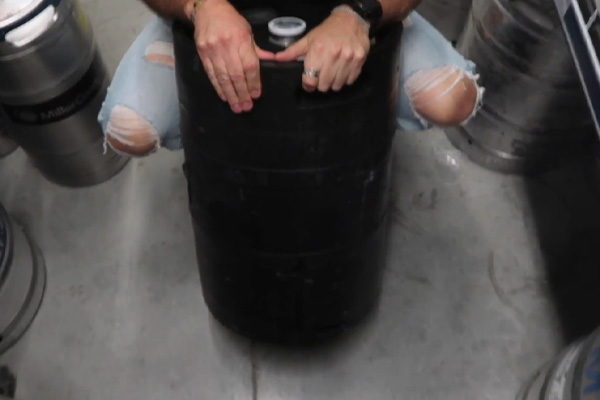
The full keg, also termed as a half-barrel keg, half keg, or full-size keg is the normal size keg in the US. The usual liquor bottle size is around the size of a fifth of an ounce of alcohol. You don’t have to attend bartending school to learn about these.
These are the most popular and distributed types of kegs.
Furthermore…
They can be utilized in a wide range of settings. From college parties to restaurants and bars, and even huge events.
And now for the upshot!
Most people refer to this half keg as just “a keg.” The half-barrel designation confuses them. One of these holds 15.5 gallons of beer. That translates to 165 12 oz. It holds 124 16 oz. beers.
So…
If you’re buying a keg for some strange reason, you can fill 31 of them with a half-barrel before you run out of beer.
This is most likely the keg you’re thinking of!
- They’re the ones you see being dragged inside bars;
- dragged up steps to home parties; and
- loom huge in the beer culture of the United States.
These are the most common and used form of kegs. They can contain 165 12-ounce pours. Other details are…
- Pints of beer per keg: Approx. 124
- Cans / Bottles (12oz) per keg: Approx. 165
- Capacity: 15.5 gallons / 58.7 liters / 1,984 ounces
- Dimensions: 23⅜” x 16⅛
Ultimately…
A half-barrel keg holds 124 16-ounce pints or 165 12-ounce cans or bottles. If your half-keg runs out of beer, it’s time to practice your upsell. A half-barrel keg weighs 160 pounds when filled. It weighs 30 pounds when empty. That means a whole half-barrel keg contains 130 pounds of beer.
50 Liter Keg
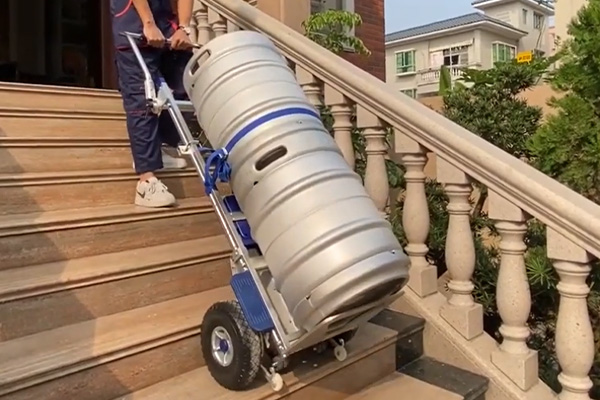
A 50-liter keg may be referred to as an Import keg or a European barrel. It is the most commonly used beer keg size in Europe. This is also the keg that most prominent foreign brands use. Consider this the European equal of a half-barrel keg.
Here’s a quick reminder!
Because this Import keg does not use a regular US Sankey D coupler…
…consult your kegerator to determine suitable kegs and equipment before purchasing this size.
A 50-liter keg weighs 130 pounds when fully loaded and 27 pounds when empty. That means a 50-liter keg holds 103 pounds of beer. The entire weight of beer is only useful when taking a keg inventory. Other details are…
- Pints (16oz) of beer per keg: Approx. 105
- Cans / Bottles (12oz) per keg: Approx. 140
- Capacity: 13.2 gallons / 50 liters / 1,690 ounces
- Dimensions: 20.94″ x 16.06″
Mini Keg
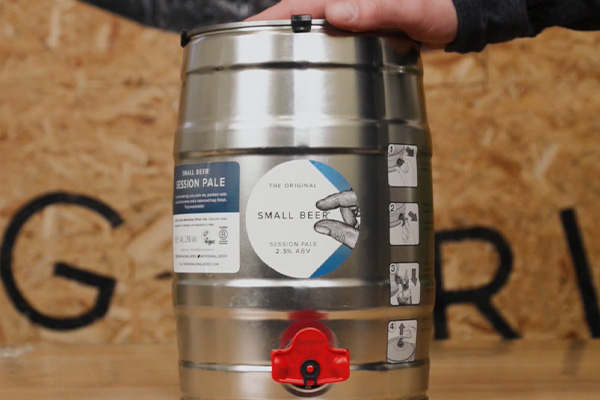
The small keg is a 5-liter keg sold at retail. Typically used with tiny kegerators. Tiny kegs may be compatible with larger kegerators. A mini-keg is commonly referred to as a miniature keg.
This is the smallest kegerator type offered, with a capacity of 5 liters (169.07 ounces). Mini kegs are seldom returned to the manufacturer for cleaning and refilling. Because the disposable kegs are composed of aluminum, you may recycle them.
Moreover…
Some dubbed it “Bubba keg.” The term has now been generalized to refer to all 5-liter mini-kegs in Canada. Mini kegs are now available in liquor stores all around the world. Heineken, Grolsch, and Bitburger embrace the design.
Lastly…
This size keg is ideal for one-time usage or portability, such as tailgating or camping and small parties and celebrations. The disadvantage of a tiny keg is that the beverage options are frequently limited.
- Pints (16oz) of beer per keg: Approx. 10
- Cans / Bottles (12oz) per keg: Approx. 14
- Capacity: 1.32 gallons / 5 liters / 1,69 ounces
- Dimensions: 9 ⅞” x 6 ¾”
Conclusion: How Many Beers In A Keg?
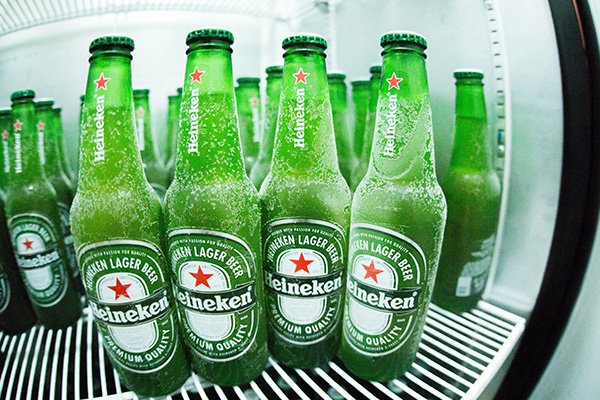
Here’s a list of the several beer kegs described above. Together with their capacity, in one convenient table. The bottles column denotes a typical 12 oz (355 ml) serving. Whereas the pints column denotes 16 oz (473 ml) servings.
| Types of Kegs | Pints | Cans/Bottles12oz | Capacity | Dimensions |
| Cornelius Kegs | 40 | 53 | 5 gallons/18 liters / 640 ounces | 23″ x 9″ |
| Sixth Barrel Keg | 41 | 55 | 5.16 gallons / 20 liters / 661 ounces | 23⅜” x 9¼” |
| Quarter Barrel Keg | 62 | 82 | 7.75 gallons / 30 liters / 992 ounces | 13⅞” x 16⅛” |
| Slim Quarter Keg | 62 | 82 | 7.75 gallons / 30 liters / 992 ounces | 23⅜” x 11⅛” |
| Half Barrel Keg | 124 | 165 | 15.5 gallons / 58.7 liters / 1,984 ounces | 23⅜” x 16⅛ |
| 50 Liter Keg | 105 | 140 | 13.2 gallons / 50 liters / 1,690 ounces | 20.94″ x 16.06″ |
| Mini Keg | 10 | 14 | 1.32 gallons / 5 liters / 169 ounces | 9 ⅞” x 6 ¾” |
So, what else do you think… should you order beer by the keg for your next event? Offering draft beer at your event adds a special touch to the festivities.
To conclude…
A beer keg may not seem necessary to everyone, but if you have a party or a large event planned, it is best to get it now. It will always come in handy during future gatherings and celebrations. The amount of beer in a keg is determined by its size. Because there are various keg kinds with varying volumes, it’s impossible to provide a single answer.
Plus…
The beer serving size determines the number of drinks in a keg. There are solutions on the market to meet various needs, and they’re aware of everyone’s wants.
Just a friendly reminder!
There will be some wasted beer once the homebrew keg is started. The first few beers should have more foam than liquid. But the same thing happens when the keg is nearly emptied. But, there are various tricks to minimizing losses and pouring the perfect glass of beer.
Just keep in mind that you’ll need to buy or rent a kegerator and enough glassware for all your guests. Of course, if you’ve engaged a caterer, they’ll handle those details for you.
Just one more thing. At your gathering, try not to consume too much draft beer. You don’t want to wake up with a hangover!

